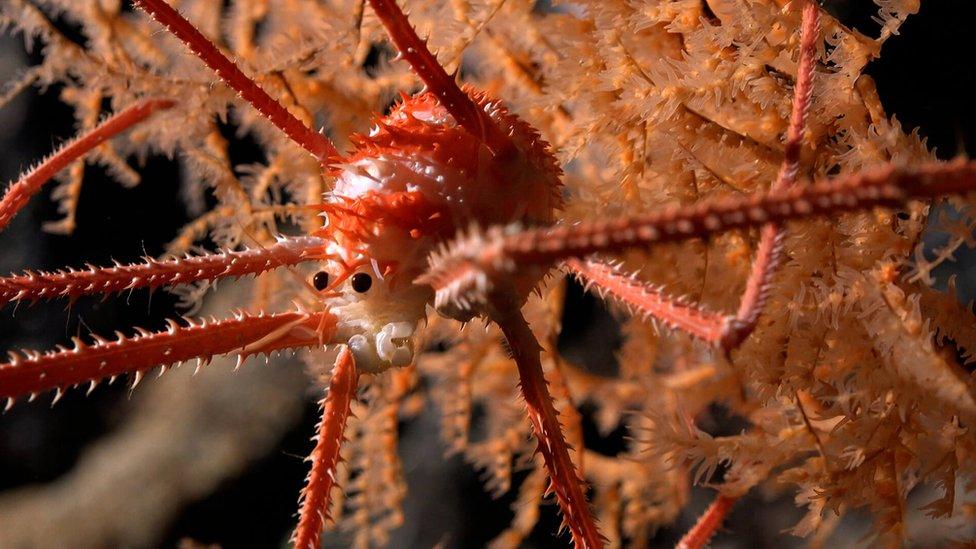More than 100 new species of sea life found on ocean mountains off Chile
- Published

A team of researchers exploring underwater mountains off the coast of Chile have discovered over 100 new species of marine life. Researchers from the Schmidt Ocean Institute explored the sea bed for over a month by using cameras, scientific instruments and even a robot, finding all sorts of exciting animals like this squat lobster here.
The researchers came across some incredible underwater species including coral, lobsters and sea urchins. This Chaunacops was spotted at a depth of 1388 metres (0.86 miles) below sea level. Chaunacops are also affectionately known as sea toads.
The expedition from 8 January - 11 February covered around 20,400 square miles (52,800 square kilometres) of ocean, from Chile to Rapa Nui (also known as Easter Island). The team found that the underwater mountains they explored hosted lots of unique species, including this intricate sponge called a Guyot Baral. Scientist Dr Javier Sellanes said: βYou always expect to find new species in these remote and poorly explored areas, but the amount we found, especially for some groups like sponges, is mind-blowing.β
Scientists are concerned about the impacts of climate change on marine life and habitats in this region, and the findings of this research mission will help scientists understand more about how underwater life has been affected. This βrarely seenβ whiplash squid was found at a depth of 1105 metres (0.68 miles).
A remotely operated vehicle (ROV) called SuBastian was used to explore areas that are near impossible for humans to reach. It can dive as far down as 4,500 metres (nearly 2.8 miles) and is uncrewed. The Schmidt Institute says it is βpiloted real-timeβ, meaning operators are able to control SuBastianβs movements directly from the ship. The Schmidt Institute say SuBastian was named after the character Bastian in the German novel The Neverending Story.
Some of the species found have been collected for analysis by the researchers. "Full species identification can take many years," says Dr Jyotika Virmani, Schmidt Ocean Institute's Executive Director.
According to Nasa, water covers 71% of Earthβs surface. Yet we know very little about what happens beneath its surface. The USβs National Oceanic and Atmospheric Administration states that, as of 2023, only a quarter of the βglobal seafloorβ has been mapped out. This means there could be all kinds of marine life living on our planet that we have no idea about - yet.
- Published23 February
- Published17 September 2023
- Published26 May 2023
